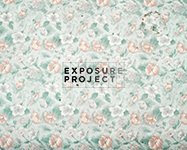I had the pleasure of visiting
Mass MOCA yesterday and seeing the expansive
Sol LeWitt: A Wall Drawing Retrospective. The exhibition is comprised of over 100 wall drawings, which span the length of LeWitt's illustrious career from the late 60's through the time of his death in 2007. There are even a couple of newer works that had never seen the light of day before their creation and installation at this retrospective -
Wall Drawing 1260 (posted below) is just one example.
A Wall Drawing Retrospective brings to life the breadth and scope of LeWitt's endeavors in Conceptualism and Minimalism. These works, installed on three floors that coincide with the early, mid and late periods of LeWitt's career, offer illuminating insights into the progression and expansion of a vision largely rooted in geometrical and architectural exploration. To reduce LeWitt's work to an exercise in formalism, however, is insufficient. When viewed in person, his wall drawings activate what I can only explain as an intense sublimity. The daunting scale of some of the drawings alone is often enough to induce strong feelings of awe. However, it is the manner in which all of the elements in LeWitt's work intersect that produces the greatest rewards. The repetition of form, line, texture and color, not to mention the intensity of many of the hues, unite to create an experience that is fiercely and actively perceptual. There were many times when my eyes played optical tricks on me. I found that LeWitt's wall drawings were the most affecting when you allowed them to envelop you, when your vision was permeated by nothing other than his creations.
Perhaps most importantly though,
A Wall Drawing Retrospective highlights LeWitt's emphasis on the concept of a work over its execution. After all, it is for this very reason that we can go to Mass MOCA and see this amazing show. His diagrammatic instructions detailing the conceptual parameters for each piece have survived, thereby enabling his wall drawings to live on uniquely in his absence.
Also, for all of you busy folks who can't make it out to Western Massachusetts any time soon, do not fear because
Sol LeWitt: A Wall Drawing Retrospective will be on view for the next 25 years.
 "Wall Drawing 46"
"Wall Drawing 46"
© Sol LeWitt "Wall Drawing 335"
"Wall Drawing 335"
© Sol LeWitt "Wall Drawing 631"
"Wall Drawing 631"
© Sol LeWitt "Wall Drawing 901"
"Wall Drawing 901"
© Sol LeWitt "Wall Drawing 1037"
"Wall Drawing 1037"
© Sol LeWitt "Wall Drawing 1260"
"Wall Drawing 1260"
© Sol LeWitt





















































